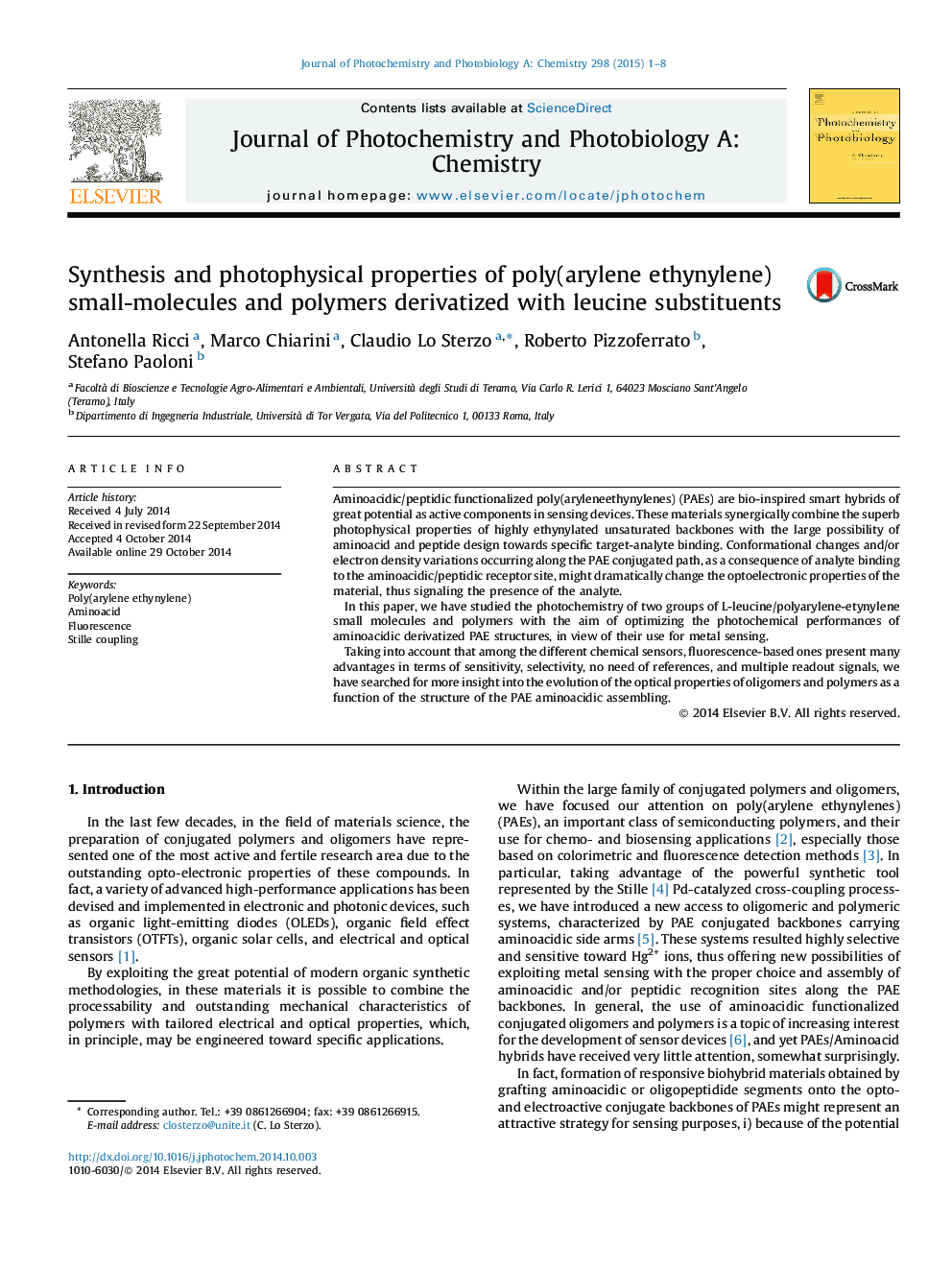| Article ID | Journal | Published Year | Pages | File Type |
|---|---|---|---|---|
| 25866 | Journal of Photochemistry and Photobiology A: Chemistry | 2015 | 8 Pages |
•Photochemical studies of L-leucine/polyarylene-etynylene small molecules and polymers.•Sensing materials based on aminoacidic receptors grafted onto conjugated platforms.•Tuning of absorption/emission performances of different acetylenic/aromatic sequences.
Aminoacidic/peptidic functionalized poly(aryleneethynylenes) (PAEs) are bio-inspired smart hybrids of great potential as active components in sensing devices. These materials synergically combine the superb photophysical properties of highly ethynylated unsaturated backbones with the large possibility of aminoacid and peptide design towards specific target-analyte binding. Conformational changes and/or electron density variations occurring along the PAE conjugated path, as a consequence of analyte binding to the aminoacidic/peptidic receptor site, might dramatically change the optoelectronic properties of the material, thus signaling the presence of the analyte.In this paper, we have studied the photochemistry of two groups of L-leucine/polyarylene-etynylene small molecules and polymers with the aim of optimizing the photochemical performances of aminoacidic derivatized PAE structures, in view of their use for metal sensing.Taking into account that among the different chemical sensors, fluorescence-based ones present many advantages in terms of sensitivity, selectivity, no need of references, and multiple readout signals, we have searched for more insight into the evolution of the optical properties of oligomers and polymers as a function of the structure of the PAE aminoacidic assembling.
Graphical abstractFigure optionsDownload full-size imageDownload as PowerPoint slide
